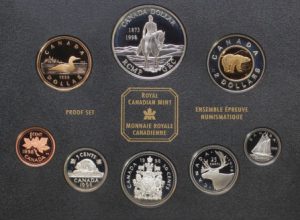On today’s date in 1873, the government of prime minister John A. Macdonald proposed an act to establish a mounted police force for the North-Western Territory (known today as the Northwest Territories).
Named for its location in relation to Rupert’s Land – the exclusive commercial domain of the Hudson’s Bay Company (HBC) from 1670-1870 – the North-Western Territory included present-day Yukon; the mainland Northwest Territories; northwestern mainland Nunavut; northwestern Saskatchewan; northern Alberta; and northern British Columbia. The vast region was controlled by the HBC until it ceded the land to the newly formed Dominion of Canada in 1870.
In 1867, Canada consisted of only four eastern provinces; however, three years later, on July 15, 1870, the government acquired Rupert’s Land from the HBC.
Opening the region to settlement required peaceful relations with Indigenous populations as well as the suppression of the whisky trade, and army officials who surveyed the area recommended a force of up to 150 mounted riflemen to maintain law and order.
THE ACT PASSES
The act proposed by the Macdonald government eventually passed on May 23, 1873.
The prime minister originally unveiled the new force as the “North West Mounted Rifles”; however, there were concerns about antagonizing both the U.S. population to the south and the Indigenous population at home, so the force was renamed the North-West Mounted Police (NWMP) when it was officially established in 1873.
It was a predecessor of today’s Royal Canadian Mounted Police (RCMP).
According to Library and Archives Canada, the general duties of the NWMP included:
- establishing law and order;
- collecting customs dues;
- enforcing prohibition;
- supervising the treaties between First Nations and the federal government;
- assisting in the settlement process;
- ensuring the welfare of immigrants; and
- fighting prairie fires, disease and destitution.
1998 PROOF DOUBLE DOLLAR SET
In 1998, the Royal Canadian Mint commemorated the RCMP on its Proof double dollar set—the only set with both a commemorative silver dollar and the aureate dollar depicting the common loon.
The set also includes 50-, 25-, 10-, five- and one-cent coins as well as a toonie.
Designed by Adeline Halvorson, the Proof silver dollar commemorates the 125th anniversary of the founding of the NWMP, an officer of which is featured on the coin’s reverse.
The obverse bears the effigy of Queen Elizabeth II by artist Dora de Pedery-Hunt.
The silver dollar is composed of 92.5 per cent silver and 7.5 per cent copper and has a weight of 25.18 grams, a diameter of 36.07 millimetres and a mintage of 130,795 pieces.


